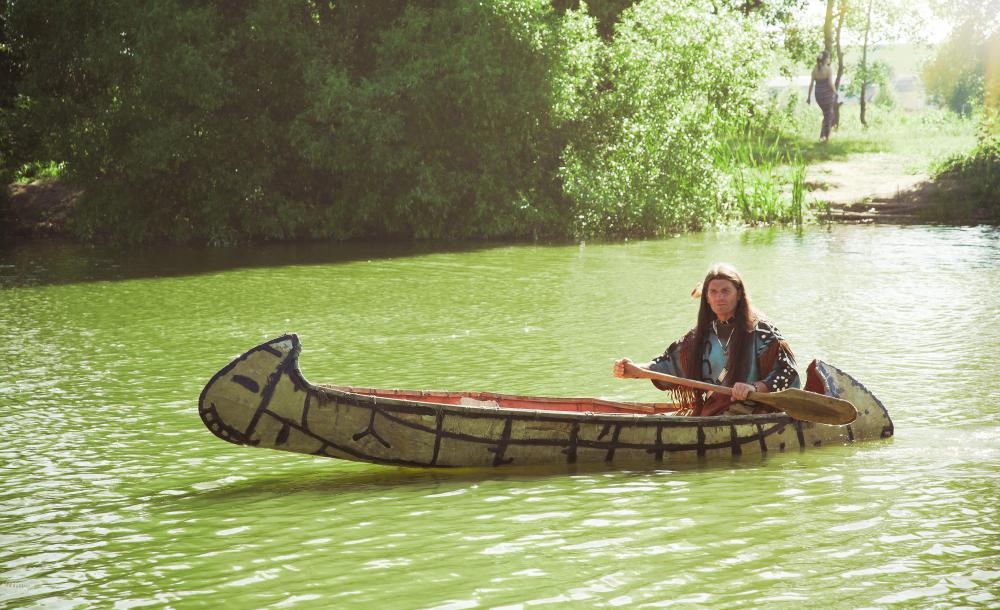At WiseGEEK, we're committed to delivering accurate, trustworthy information. Our expert-authored content is rigorously fact-checked and sourced from credible authorities. Discover how we uphold the highest standards in providing you with reliable knowledge.
What is the Iroquois Nation?
The Iroquois Nation is a confederation of five Native American tribes — the Mohawk, Seneca, Cayuga, Oneida, and Onondaga — who were later joined by the Tuscaronra Nation to form what the Iroquois call "The League of Nations." Originating from the thickly wooded area of what is now upstate New York, the Iroquois Nation speak the same language and share similar cultural and spiritual practices. The Iroquois are known for their sturdy longhouses and for being the oldest participatory democracy still in existence today.
The Iroquois were farmers and hunter-gatherers. Food was cooked and stored in the famed longhouses where Iroquois families lived. The people took great pride in the construction of these longhouses, which could be over 200 feet (61 meters) long. Sensitive to the majesty of full-grown trees, the Iroquois made sure to use every part of the trees they chopped down. Thus, tree bark, saplings, branches, and trunks were all used to build longhouses. The Iroquois patched holes and cracks with moss and animal hides.

Iroquois culture was matrilineal, meaning that men married into their wife's clan. Clans were headed by Clan Mothers, who wielded a great deal of power. Clan Mothers chose the powerful male council members who debated issues and made decisions for the whole tribe. If a council member displeased the Clan Mother, she could fire him. Women could own property and leave their husbands if they chose.

The Iroquois were not always united. Hundreds of years ago, the five tribes warred and competed for land and resources. According to legend, around the year 1550, a Mohawk named Hiawatha met a prophet named Deganawidah. The two realized that the tribes should unite to ensure peace and prosperity. A skilled politician, Hiawatha gave stirring speeches and persuaded the five tribes into forming the Iroquois Nation. The Tuscarora joined in 1721 to form the Six Nations of the Iroquois confederacy.
Just as every tribe had a council, the League had its own 50-member Grand Council. The main purpose of the Iroquois Nation Grand Council was to keep peace among the tribes. The peaceful Onondaga held 14 seats, while the belligerent Mohawk and Oneida had only nine seats each. Consensus was essential; the Grand Council was meant to represent the wishes of all.
The League of Nations constitution is preserved in wampum, which served as memory aids to the oral historians. Wampum are arrangements of dyed beads and shells strung together to convey important messages. The most important wampum were woven as belts or necklaces.
During the War of Independence, the council tried to remain neutral. Clan Mothers and the Grand Council debated furiously over whether to support the British or the colonists. In some cases, individual villages joined the colonists, but a majority sided with the British. Towards the end of the war, American soldiers drove the Iroquois north into Canada; other members of the confederacy scattered as far as Wisconsin and Oklahoma. A weakened form of the League still exists today, but the Revolutionary War spelled the end of the Iroquois Nation's power.
Some historians believe the Iroquois Nation served as a model for the U.S. Constitution. James Madison, John Adams, and Benjamin Franklin were aware of the democratic system for preserving peace among the clans. In 1988, the U.S. government passed a resolution acknowledging the Iroquois Nation's contribution to the Constitution and the Bill of Rights. Other historians and anthropologists question the idea that the Founding Fathers drew inspiration from the dispersed Iroquois Nation, however.
AS FEATURED ON:
AS FEATURED ON:












Discuss this Article
Post your comments